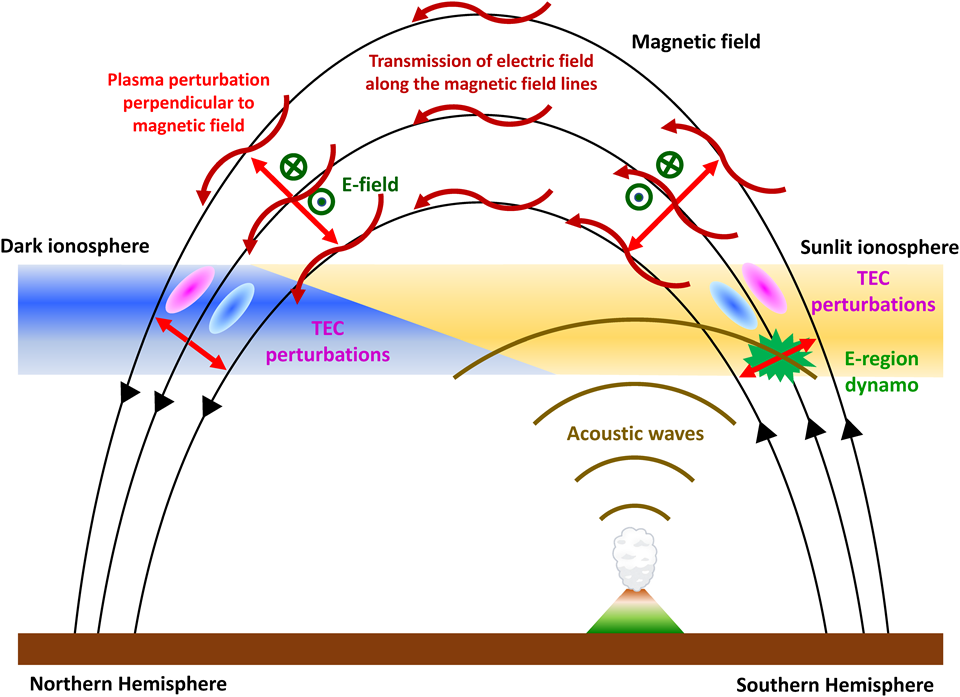Successful observation of Earth's atmospheric oscillation caused by Tonga undersea volcano eruption: Quickly catch information on meteorological tsunamis from ionospheric disturbances
2022-07-14
A research group led by Designated Assistant Professor Dr. Atsuki Shinbori, Associate Professor Dr. Yuichi Otsuka, Mr. Takuya Sori (Graduate School of Science D3), and Associate Professor Dr. Nozomu Nishitani analyzed observation data obtained from the Global Navigation Satellite System (GNSS), the Himawari weather satellite, and the SuperDARN Hokkaido pair of radars.
As a result, synchronized ionospheric disturbances observed over Australia were observed three hours before the arrival of the air pressure waves over Japan, about 6800 km away from the eruption. This means that the ionospheric disturbances propagating along the magnetic field lines traveled at a speed of 1000 km/s, while the air pressure waves propagated at 315 m/s, which is nearly the speed of sound. This study clarified the mechanism of high-speed propagation of the ionospheric disturbances.
In the future, the information from ionospheric disturbances is expected to be applied to tsunami alerts caused by volcanic eruptions and other events.
The research results will be published in Earth, Planets and Space, a comprehensive international journal of earth sciences, on July 13, 2022.
Reference:
Atsuki Shinbori, Yuichi Otsuka, Takuya Sori, Michi Nishioka, Septi Perwitasari, Takuo Tsuda, and Nozomu Nishitani, Electromagnetic conjugacy of ionospheric disturbances after the 2022 Hunga Tonga‑Hunga Ha’apai volcanic eruption as seen in GNSS‑TEC and SuperDARN Hokkaido pair of radars observations, Earth, Planets Space, 2022. https://doi.org/10.1186/s40623-022-01665-8.



